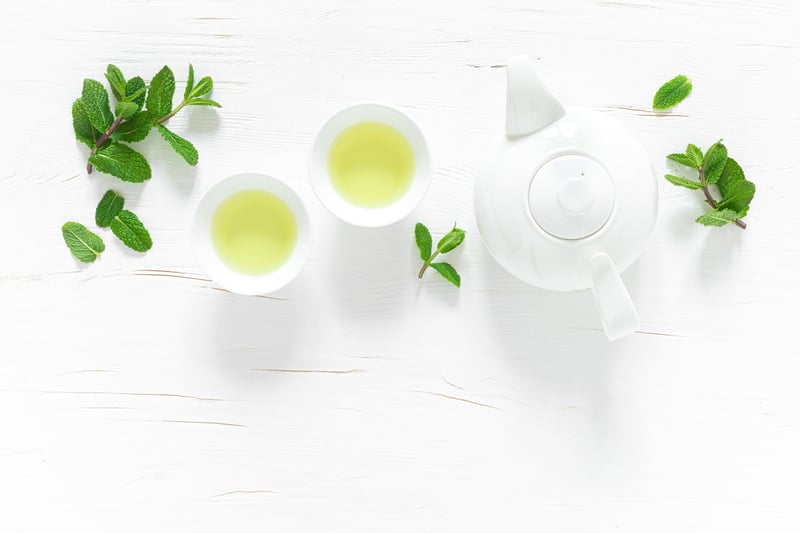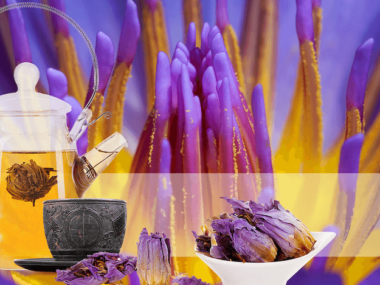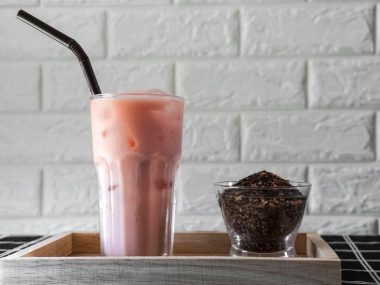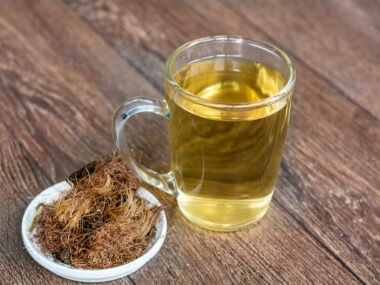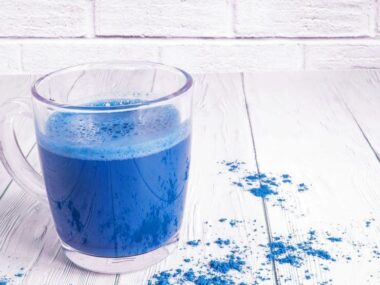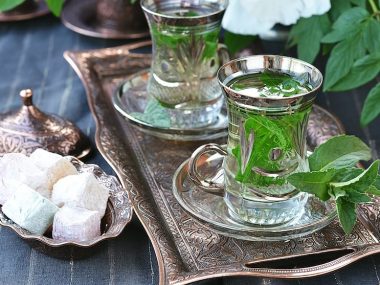We have a tea that might just keep those chin hairs in check while clearing up embarrassing breakouts of acne. Perhaps Hippocrates was onto something with his pursuit of consuming this tea for different reasons.
Table of Contents
What Is Spearmint?
Spearmint (Mentha spicata) is an herbaceous plant distributed throughout various parts of the world. This plant is cultivated, harvested, and processed for use as flavoring, tea infusion, essential oil, aromatherapy, beauty products, and so much more.
The lovely aroma emitted by spearmint comes from a phenol constituent called carvone. Various industries are attracted to the menthol smell and the cooling taste sensation spearmint is so well known for. You’ll find spearmint in many everyday products we use. However, when it comes to tea, spearmint adds a pop of flavor sensation.
Where Does Spearmint Come From?
The Economic Botany Journal published an article that mentions Mentha spicata (spearmint) as being native to the Balkan Peninsula and parts of Turkey. It was introduced and became naturalized in the Mediterranean region, parts of Europe, and North America. Greece is a spearmint mecca where you’ll find wild spearmint growing rampantly throughout the land.
An interesting fact about spearmint is it preceded peppermint. Back “in the day,” Hippocrates relied on spearmint to treat various ailments and stomach upsets. As you can see, this herb has been around for a long time. It has become a staple aromatic and flavoring for many consumables and commodities we use and enjoy daily without thinking about it.
Spearmint Vs. Peppermint
Mint is mint , right? Actually, spearmint and peppermint are different. Both belong to the Mentha genus; however, peppermint (Mentha x piperita) is a hybrid developed from spearmint (Mentha spicata) and water mint (Mentha aquatica.) So technically, spearmint is a parent plant of peppermint.
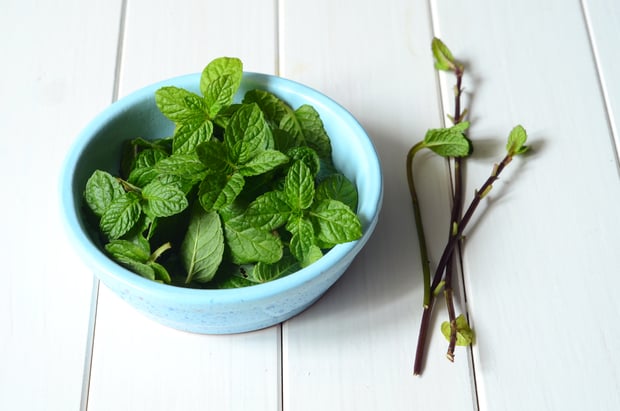
Spearmint is a nice subtle mint that’s not overpowering and perfect for a cup of tea. Peppermint is a bit feistier and bold in taste and aroma. The menthol content in peppermint is significantly higher than spearmint topping out at 40%. Spearmint’s menthol content is a measly 0.5%.
Spearmint is a sweet, slightly menthol, cooling tasting herb while peppermint’s flavor and menthol presence explode in taste which is spicy and tends to be overpowering.
Does Spearmint Tea Have Caffeine?
An unadulterated cup of spearmint tea does not have caffeine. However, spearmint is often infused with true teas (black, green, oolong, yellow, white) and these teas are caffeinated. True tea comes from a naturally caffeinated plant (the tea plant – Camellia sinensis.) A six-ounce cup of spearmint-infused true tea may contain as much as 60 mg of caffeine.
Is It Safe To Drink Spearmint Tea?
We do not have the professional expertise to provide advice on whether or not a tea is safe for you to consume. The evidence-based information we do provide helps our readers to decide for themselves if a certain tea is safe to drink or not.
If you have existing medical conditions, are taking medications (including chemotherapy or radiation,) or are pregnant or nursing, it’s best to talk to your healthcare provider about drinking tea. Tea may worsen medical conditions, cause adverse reactions or side effects, or interact with medications (including chemo/radiation.)
Those with liver disorders or are taking the following medications should be careful to enjoy spearmint tea in very small amounts.
- Cordarone (amiodarone)
- Tegretol (carbamazepine)
- INH (isoniazid)
- Rheumatrex (methotrexate)
- Aldomet (methyldopa)
- Diflucan (fluconazole)
- Sporanox (itraconazole)
- Erythromycin
- Dilantin (phenytoin)
- Mevacor (lovastatin)
- Pravachol (pravastatin)
- Zocor (simvastatin)
- …and other drugs as prescribed for liver disorders
Those taking sedative drugs or sedating herbs should also enjoy spearmint tea in very small amounts. According to a research article (“Mentha spicata Essential Oil, Phytochemistry and Its Effectiveness In Flatulence,”) spearmint has a sedating effect. Drinking spearmint tea on top of taking sedatives can cause severe drowsiness.
Use caution if you are taking any of the following drugs.
- Klonopin (clonazepam)
- Ativan (lorazepam)
- Donnatal (phenobarbitol)
- Ambien (zolpidem)
- …and other drugs prescribed as central nervous system depressants
Use caution if you are taking any of the following herbs.
- Catnip
- Kava
- St. John’s Wort
- Valerian
- …and other sedating herbs
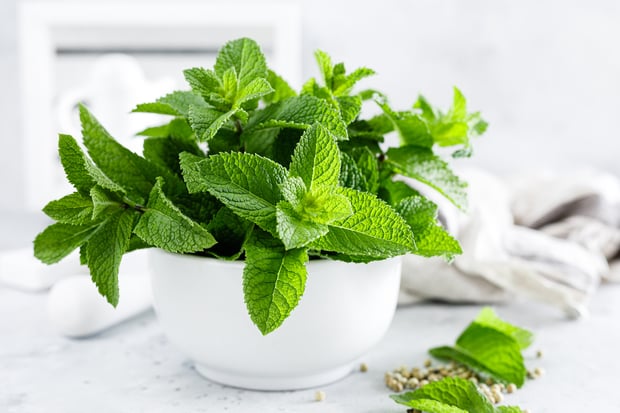
Side Effects Of Spearmint
Medline Plus’s fact sheet on spearmint mentions that large amounts of spearmint consumed may cause damage to the uterus (during pregnancy,) liver, or kidneys. It’s also noted that side effects are uncommon.
Can I Drink Spearmint Tea Everyday?
It’s difficult to determine how much spearmint tea is too much to consume daily. According to Medline Plus, there’s insufficient data (or lack thereof) that depicts what is considered a safe intake amount.
Spearmint Tea Benefits
Spearmint’s bioactivity includes sedation, anti-inflammatory, antimicrobial, antispasmodic, anti-flatulent, antiviral, and more. Its use is widespread in the traditional medicine community to treat numerous ailments and conditions.
What Is Spearmint Tea Good For?
A mini-review of spearmint by the Integrative Food, Nutrition and Metabolism Journal lists numerous health benefits that spearmint delivers. Mentha species are known to help gastrointestinal ailments. Spearmint (Mentha spicata) may highly benefit those who suffer from irritable bowel syndrome (IBS,) inflammatory bowel disease (IBD,) flatulence, gastralgia (indigestion,) stomach pain, nausea, and vomiting.
The antispasmodic, sedating effect spearmint provides not only helps to relieve unpleasant symptoms of IBS and IBD, but it may also help as a bedtime tea to relax. When upper respiratory viruses or the flu hits, the menthol aroma of a cup of spearmint tea is comforting for a miserable stuffy nose.
The Journal of Medicinal Food studied osteoarthritic test subjects who consumed spearmint tea twice a day for sixteen weeks. The results revealed spearmint as beneficial at improving the stiffness that accompanies osteoarthritis while also reducing associated pain.
A research study relating to herbal infusions and health had test subjects with polycystic ovary syndrome drink two cups of spearmint tea a day during an allotted period of time. Once the study concluded, results indicated not only did the test subjects have improved hormone levels but also an improvement in hirsutism (excessive hair growth due to production of the male hormone androgen.)
So, is spearmint tea good for skin conditions such as acne? Spearmint has the potential to help acne. Acne often results from high androgen levels (male hormone) present in the body.
How To Make Spearmint Tea
Spearmint tea is one of those teas that provide a boost of cheer. The aroma and cooling sensation the tea delivers make it perfect for iced tea in the summer or a hot tea when we can’t breathe due to a cold.
We have two recipes to enjoy spearmint tea, either hot or cold.
Iced Peach-Spearmint Tea
Just when the summer sun beats down and saps the energy right out of you, have a sit with a glass of chilly, iced minty tea. We bet you’ll be back up and running lickety-split.

Serves: 3
Ingredients
- 6 cups of water
- 6 teaspoons of loose-leaf spearmint tea (organic spearmint tea is best)
- 4 teaspoons of Assam loose-leaf black tea
- 4 tablespoons of pure peach syrup
- 2 fresh peaches sliced
- Fresh sprigs of spearmint
- Ice
Directions
- Heat the water until it reaches 185 degrees (F) (85 degrees C.)
- Place the loose-leaf (organic) spearmint tea and Assam black tea into a tea infuser.
- Remove the water from the heat.
- Drop the tea infuser into the pan of hot water.
- Cover and all the tea to steep for 5 minutes.
- Remove the cover and tea infuser.
- Allow the tea to come to room temperature.
- While the tea is cooling, slice the peaches and wash the spearmint sprigs.
- Once the tea is cooled, add the peach syrup and stir well.
- Fill 3 chilled glasses with ice until it’s about ¾ full.
- Pour the tea into the ice-filled glasses.
- Garnish with a slice of peach and a sprig of spearmint.
- Enjoy!
Hot Mint-Chocolate Chip Tea
When the snow is coming down, and your bones are chilled to the core, it’s time to make a cup of tea that warms the soul.
Serves: 1
Ingredients
- 2 cups of water
- 2 teaspoons of loose-leaf spearmint tea (organic spearmint tea is best)
- 2 teaspoons of Ceylon loose-leaf black tea
- 1 teaspoon of cacao nibs
- 1 teaspoon of dark chocolate chips
Directions
- Heat the water until it reaches 185 degrees (F) (85 degrees C.)
- Place the loose-leaf (organic) spearmint tea, cacao nibs, and Ceylon black tea into a tea infuser.
- Remove the water from the heat.
- Drop the tea infuser into a teapot.
- Pour the hot water into the teapot.
- Cover and allow the tea to steep for 5 minutes.
- Remove the cover.
- Pour the tea into a teacup.
- Add the dark chocolate chips and slowly stir.
- Savor the tea with slow sips and enjoy
Spearmint: A “Cool” Choice!
Spearmint tea is one of those teas that has the capability of reaching our inner depths with a rush of utter mint goodness. Spearmint is versatile, allowing tea drinkers to come up with their own favorite recipes. Don’t forget moderation is the key to safely enjoying this tea.
